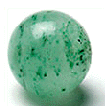
Scientific Information: Grayish, yellowish, brownish, or green quartz with small platy mica inclusions (hematite or geothite also) is called Aventurine. The hardness is 7 and the streak is white.
Environment: Quartz is an important rock-forming mineral and developed in many different environments.
Occurrence: Aventurine is found in Brazil, India and Russia.
Legend & Lore: Aventurine was revered by the ancient Tibetans. They used it to represent the "eyes" in sacred statues, thus symbolizing increased divinatory powers.
Magical Properties: This stone is considered to be a gambler's talisman. It is said that it will attract money. It is considered a "lucky" stone.
Healing: This stone is associated with the Thymus Gland. It has been traditionally used for improving eyesight and healing diseases of the eyes.
Personal Experience: I use Aventurine as a Heart Chakra stone, to balance such stones as Rhodonite. In addition, I recommend it to those who are starting out on new paths or adventures because it is protective, but opens the eyes to "new horizons".
Notes: The yellow / brown form of Aventurine is from Russia. It is almost impossible to find anymore.
Green Aventurine: Called the "Stone of Heaven". An all-around healer (mental, emotional physical). It soothes, heals, and balances. It opens and soothes a wounded heart, enhances intelligence, increases opportunities and motivation, brings luck and adventures in love and games. It is a prosperity stone.
Blue Aventurine: All-around healer; opens and dissolves blocks in the brow center. Increases visionary powers and perceptions. Stimulates creativity and expression.
Blue-Green Aventurine: An all-around healer (mental, emotional, physical). It soothes, heals, and balances. Connects the heart and throat centers helping one communicate in a more loving manner.
Orange Aventurine: All around healer to bring joy into one's life. Works with the second chakra, dissolving creative blocks and healing sexual trauma. Aids in independence and originality.
Bibliography
Agate: The workhorse of the stone world; slow forming, steady and reliable. Promote grace, good health, happiness, intelligence, longevity. One who looks upon an agate tells the truth and is aided in remembering. Agates are grounding and gentle. They are protection stones, stones for inheritances. They give strength, victory and attunement with the earth. They sharpen sight, illuminate minds and assist in discovery. They protect children from falling.
Banded Agate: Strong protectors, reinforcing your strength and providing protection if you are very sensitive. Helps one who needs extra courage or energy to face stress.
Black & White Agate: Guard against physical dangers.
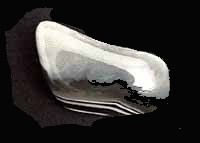
Botswana Agate: Protection for the super-sensitive (especially in crowds). Strengthens sexual energy. Eases the pain of loneliness. Helps with emotional understanding. Liberates mental feelings. Strengthens the immune system.
Lace Agate: Aid attitudes - ease depression and despair. Their energy is circular and flowing. Lace agates do not protect, they encourage and support. Let them bring out your inner beauty.
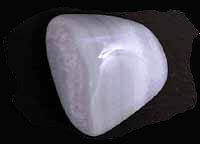
Blue Lace Agate: Wear or carry for peace and happiness. Calms the emotions and mind. Washes away mental clutter. Works on the thyroid. Brings total attunement to the senses.
Mexican Lace Agate: Bolsters and strengthens your attitude.
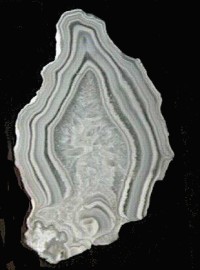
White Lace Agate: Called "Happy Lace." It can support optimism and elevate your thoughts.
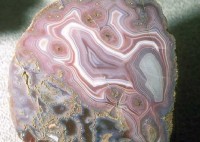
Pink Lace Agate: Adds to your happiness by helping you to rescue your attitude.
Moss Agate: Crown and brow center opener that connects the spiritual to the physical. Aura protector that neutralizes fears and opens the mind and Be-ing to new ideas. For meditation the clouds lead the mind into astral realms and expand consciousness. Eases emotional pain, aids creative visualization, increases trust and strength for earthly survival. Stimulates universal love. Connector to spirit guides, helps open communications with unseen entities. Helps you connect with nature spirits and the land. Gardener's talisman, increases your plants' fertility and ensures a bountiful crop or healthy flowers.
Plume Agate: Encourages creative visualization, that is, to create an image of what you want and then achieve your goal. Aids you to keep focused. Good job-hunting stone.
Dendritic Agate: One or the most powerful protective stones for travel, for it can prevent you from getting fatigued or having an accident when traveling down the highway. Carry in your pocket or purse when traveling by air.
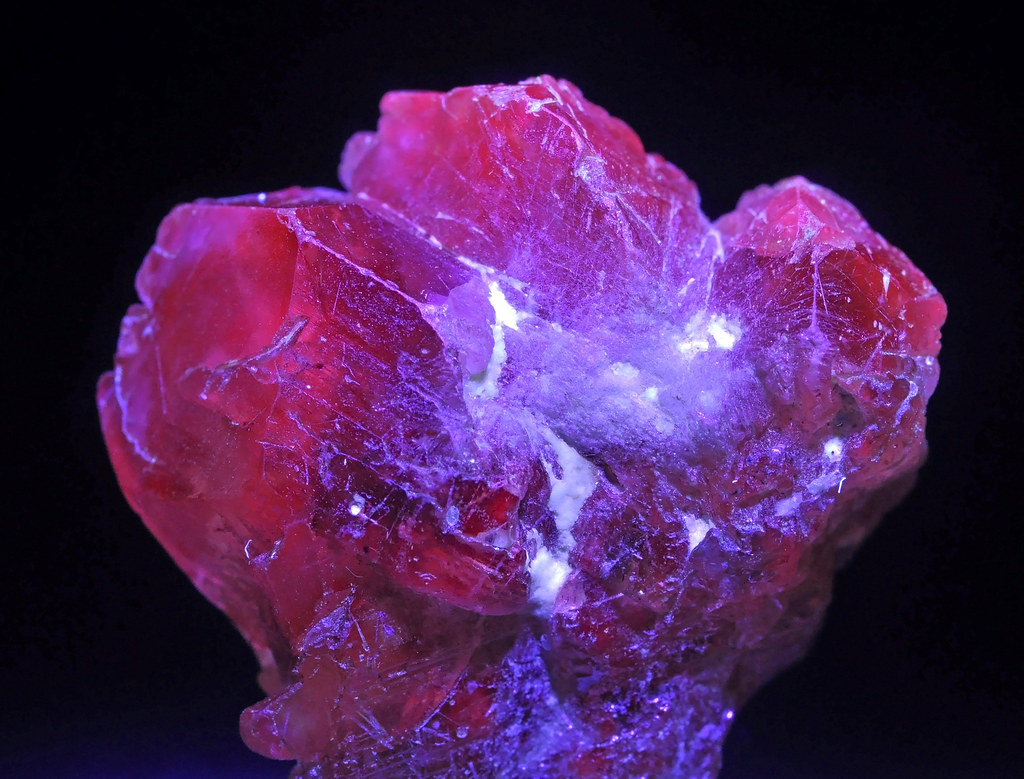
A variety of chrysoberyl. Aids internal and external regeneration, has positive influence on nervous system, spleen, pancreas. Helps to align mental and emotional body. Spiritual tranformation and regeneration. Reflects highest potentials of unfoldment.
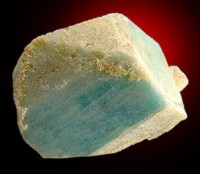
Known as the "Hope Stone." It inspires faith and hope. Balances the emotions. Helps align the heart and solar plexus chakras. Helps perfect personal expression and verbalizing. Works somewhat like rose quartz, but it flows more with the emotions towards others.
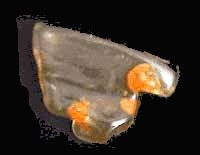
Scientific Information: Amber is not a true stone. It is fossilized resin of coniferous trees of the Oligoncene geological epoch, some thirty million years ago. It varies in color from pale yellow to dark brown, although some specimens have been found that are red. Amber is famous for containing insects and small animals of various kinds as well as leaves, bark and other contemporary detritus which became stuck and enclosed in the resin while it was still liquid. It is sometimes also called succinite. Amber is a very soft stone, with a hardness of 2 to 2-1/2.
Environment: The trees that exuded the resin for Baltic amber grew in what is now central and south-eastern Sweden. From there, it was carried by rivers and the sea to the present site.
Occurrence: The most prolific source of amber is the Baltic seacoast to the north and west of a town now known a Kaliningrad in the USSR. Small deposits have been found in the Dominican Republic.
Name: The name is derived from the Arabic. Succinite is from the Latin [succus], meaning "juice". The ancient Greeks called it [elektron].
Legend and Lore: The ancient Greeks were the first to record information about amber's "electrical" properties. If it is rubbed with a piece of silk, it will attract dust and ashes. Because of the inclusions of insects and small animals, it was often thought to contain the essence of life.
Magical Properties: Amber has always been associated with magic. It is a favorite protective and enhancing stone of Wiccans and Shamans. It is a sensual, (amber is warm to the touch,) magnetic stone that attracts love.
Healing: In ancient times, amber was burned to cleanse the air, especially during childbirth. It was also thought to improve eyesight by gazing into it.
Personal Experience: Touching amber is soothing to the nerves. Stones of the pale/bright yellow type are good "all-healers", since they represent the energy of the Sun. I use them at the Solar Plexus, which is the center of Chi in the body.
Notes: Amber will float in a saturated salt solution (ten level teaspoonfuls of salt in a tumbler of water). Plastic will not.
Ambergris, which is much used in perfumery, is totally different in appearance and is not even distantly related to amber.
I discourage people from burning amber, although it will create a rather pleasant odor. Amber, like all fossils/fossil fuels is NOT a renewable resource.
Bibliography
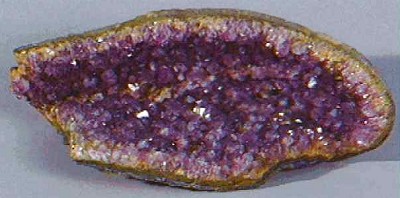
Scientific Information: Violet to red-purple quartz is called amethyst. It is the same formula as Quartz (SiO2) with the addition of iron. Its hardness is 7.
Environment: Basic quartz is an important rock-forming mineral and developed in many different environments. Amethyst is often found in Quartz geodes.
Occurrence: Gem quality stones come from Brazil, Uruguay, the Ural Mountains and Japan. Fine deep-colored amethyst occurs in the quarries in Patterson, New Jersey. Drusy amethyst (generally paler in color) is abundant in many silver mines in Mexico. Some specimens have been found in the Four Peaks region of Arizona.
Name: The name comes from the Greek [A-methystos], meaning 'not tipsy'.
Legend and Lore: Amethyst and magic have been connected for at least 2,000 years. The Greeks believed it to be an amulet against inebriation. It is one of the few stones specifically recommended for men to use for attracting women. Amethyst is the birthstone for February:
"The February-born shall find
Sincerity, and peace of mind,
Freedom from passion and from care,
If they the Amethyst will wear."
Magical Properties: Amethyst can be used to increase psychic awareness, to sharpen the 'sixth sense'. Because of this, many people keep a crystal with their I-Ching, tarot, or Rune tools. It is considered a very spiritual stone.
Healing: This stone is the major stone for the Crown Chakra. This location deals with extrasensory perception. In addition, it can be used in this position for healing of the nervous system and the brain.
Personal Experience: I use this stone as a "calming" stone for those people who are "hyper" and anxious. It will also work for mild depression. (See Kunzite for severe/manic depression.) In addition, I recommend it for anyone who is addicted to alcohol or other mind/mood altering drugs.
Notes: Heat treating Amethyst will change it from purple to brown or yellow, and many Citrines on the market are created this way. Amethyst from one particular mine in Brazil will turn green when heated. It is marked under the name of prasiolite. (Although this is actually the name of an entirely different mineral.
Bibliography
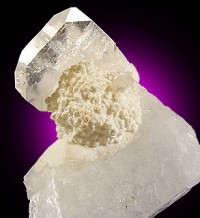
Scientific Information: Apophyllite is hydrous calcium potassium fluorsilicate which is often found with a small amount of iron and nickel. The chemistry is KCa4Si8O20(F,OH).8H2O. It ranges in color from clear thru white, gray, greenish, yellowish and reddish. The streak is white. Hardness is from 4-1/2 to 5. The crystals of this mineral are Tetragonal, usually cubelike or tabular, square in cross section. They will often have a pearly luster on one side.
Environment: Apophyllite forms at low temperatures and is commonly found in cavities in basalt of volcanic rock, where it is associated with zeolites and prehnite.
Occurrence: There are many outstanding localities in North America where apophyllite can be collected. Excellent glassy crystals occur with prehnite in the basalt in the Watchung Mts., Passaic Co., New Jersey, and the same association has recently been found in a diabase near Centreville, Fairfax Co. Virginia. Large glassy crystals have come from the copper mines on the Keweenaw Peninsula, Michigan.
Name: The name comes from the Greek [apa], meaning 'off', and [phyllon], meaning 'leaf'. This refers to the fact that the mineral flakes apart when heated in a flame.
Personal Experience: This is not a mineral that I have in my collection, nor have I ever seen one in person. However, judging from the information and the photos in the Audubon book, I can think of 2 possible uses. The first would be as a "heart stone". This would be to regulate and strengthen the heartbeat. In conjunction with this, I can see it used as a stone for athletes, giving them stamina and strengthening the muscular structure. If the pearlesence of the stone was strong, I can also visualize it being used at the Transpersonal Point, in much the same manner as Moonstone.
Bibliography
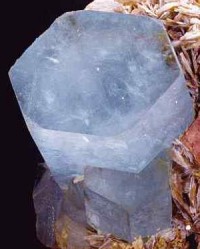
Scientific Information: Beryl is Beryllium aluminum silicate, frequently with some sodium, lithium and cesium. The chemistry is Be3Al2Si60qi. The hardness is between 7-1/2 and 8 and the streak is white. The name "Aquamarine" refers to the paleish blue, light blue-green or even light green variety of beryl. The green of aquamarine is a watery green without any trace of yellow and is due to iron, not chromium.
Environment: Beryl develops in pegmatites and certain metamorphic rocks. It occurs with quartz, microcline, and muscovite in pegmatites, and with quartz, muscovite, and almandine in schist of regional metamorphic rocks.
Occurrence: Most Aquamarine comes from the pegmatites of Brazil, where crystals weighing several kilos have been found. Other deposits are in the Soviet Union (Transbaikalia, Urals and Siberia), Madagascar, the United States, and recently, Afghanistan.
Gemstone Information: The most valuable color is a rich, sky blue; but because the stone is pleochroic, even the blue stones have a green or greenish-blue tinge in one direction. Quite large stones, ranging from several carats to more than ten or a few tens of carats, are relatively common. Many are virtually free of inclusions. The most common cut is the emerald type, although mixed oval or pear-shaped cuts are not infrequent.
Name: The name is from the Greek [beryllos], indicating any green gemstone. (The majority of Beryl mined is some shade of green.) "Aquamarine" was first coined by the Romans and means "water of the sea".
Legend and Lore: Aquamarine is a traditional protective and luck stone for fishermen. In addition, it has been carved into cups and goblets because of the belief that it aids digestion and reduces body fluids.
Magical Properties: This stone is associated with Sea Goddesses. It is recommended for increasing psychic abilities.
Healing: Traditionally, Aquamarine has been used for relief of stomach disorders and as a diuretic. It has also been recommended for toothaches.
Personal Experience: I use Aquamarine for the elimination of excess body fluids. I've used it for kidney and bladder distress. It will also work as a "diet" stone because it not only relieves eating disorders, but soothes the emotions behind them. As an aqua stone, it can be used at the Throat Chakra for sore throats, tonsillitis and other inflammations. Magically, I use this stone to represent Dolphin and the feminine principles of the Oceans.
Bibliography
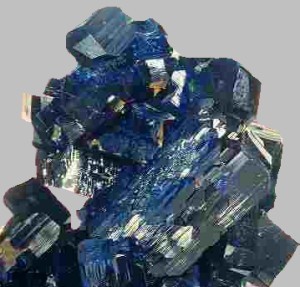
Scientific Information: Azurite is a basic copper carbonate. The chemistry is Cu3(CO3)2(OH)2. It varies from a rather dark blue thru "azure" blue. The streak is blue and the hardness ranges from 3-1/2 to 4.
Environment: Azurite is a secondary copper mineral and develops in the zone of alteration in all types of hydro-thermal replacement deposits, where it commonly occurs with malachite, limonite, and chalcopyrite.
Occurrence: The copper deposits at Tsumeb, South-West Africa, have yielded some of the finest Azurite crystals in the world. The copper deposits in Arizona and Utah that yielded many fine specimens of Malachite also yielded outstanding specimens of Azurite. Fine Azurite crystals have also been found in the San Carlos Mine, Mazapil, Zacatecas, Mexico.
Name: The name is from the characteristic azure-blue color of the mineral.
Legend and Lore: It is said that the priests and priestesses of ancient Egypt used this stone to enhance their spiritual consciousness. Edgar Cayce spoke of Azurite helping him attain a meditative state more easily. This mineral is associated with Sagittarius.
Magical Properties: Azurite is associated with divination. When you are practicing precognition, hold a piece in your hand. This is a stone that likes to be touched...and touching it will help to release it's energies.
Healing: This stone is said to restructure molecules, revitalize the brain, rebuild gray matter and aid in developing embryonic babies in the womb.
Personal Experience: I usually include Azurite in layouts that are for the purpose of increasing divination, or Third-Eye abilities. It is also useful at the Third Eye Chakra for making sense out of a very emotional situation. Very often, the Azurite found in the Southwestern part of the U.S. is mixed with Malachite. This results in a beautiful blue stone with small green marks on it. When cut and polished in a spherical shape, these remind one of a planet. They are soothing to look at and hold.
Notes: Azurite is an ore of copper and a minor ornamental stone.
Bibliography
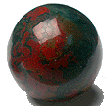
Scientific Information: Bloodstone is a member of the Chalcedony family. It is a variety of quartz (silicon dioxide) often with some iron and aluminum. The chemistry is SiO2. It is dark, bright green spotted with red inclusions. The streak is white. This is considered a microcrystalline variety of quartz and is not found in crystal form.
Environment: Chalcedony is formed in several environments, generally near the surface of the earth where temperatures and pressures are relatively low. It commonly forms in the zone of alteration of lode and massive hydro-thermal replacement deposits and as bodies of chert in chemical sedimentary rocks.
Occurrence: India, Germany.
Name: This stone is also referred to as "heliotrope," which is derived from two Greek words which signify "sun-turning". It was given this name because of a notion that when immersed in water it would turn the sun red. Chalcedony is derived from Chalcedon, an ancient Greek city of Asia Minor.
Legend and Lore: This is one of the birthstones for March.
"Who in this world of ours, her eyes
In March first opens, shall be wise.
In days of peril, firm and brave,
And wear a Bloodstone to her grave."
Ancient warriors often carried an amulet of bloodstone which was intended to stop bleeding when applied to a wound.
Magical Properties: Because it is green, it can be used for "money spells". It is also considered a "lucky" stone for athletes because it imparts courage and stamina.
Healing: Heliotrope is used today in conjunction with anything having to do with blood.
Personal Experience: I consider the ancient uses of bloodstone in line with what I use it for today. In addition, I consider it a "cholesterol buster", and wouldn't hesitate to apply it to any with this type of problem. Generally I would use it at the Heart Chakra. I've also used it successfully in situations where I needed "courage" to accomplish something. I will just carry a piece of it in my pocket for this purpose.
Notes: Chrysoprase, carnelian, jasper and agate are all forms of Chalcedony.
Bibliography
General healing and balancin. A happy stone, a mood elevator. Attunes us to nature. Srengthening, heals holes in aura. Increases physical energy as it brings in more Life Force.
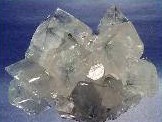
Calcite: Very beneficial for the cleansing organs, bones, joints, and for sharpening mental clarity. Helps boost the memory. Softens the rigid boundaries of the intellectual mind so that true inner knowing can be attained. Recommended for those involved in the healing professions.
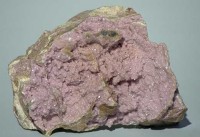
Pink Calcite: Calms, centers, and grounds. Brings love.
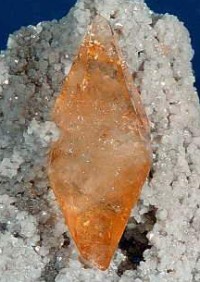
Orange Calcite: Protective. Lends energy to the body. Brings joy.
Green Calcite: Helps release old mental patterns and accept the new. Draws prosperity.
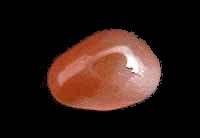
Scientific Information: Carnelian is the clear red to brownish red member of the Chalcedony family. It is a microcrystalline variety of Quartz (Silicone Dioxide) and may contain small amounts of iron oxides. The hardness is 7, and the streak is white.
Environment: Chalcedony is formed in several environments, generally near the surface of the earth where temperatures and pressures are relatively low. It commonly forms in the zone of alteration of lode and massive hydro-thermal replacement deposits and as bodies of chert in chemical sedimentary rocks.
Occurrence: Fine carnelian comes from India and South America.
Gemstone Information: Carnelian is used as an alternate birthstone for the month of May. It is normally cut into cabochons, engraved, or made into seal stones or rounded, polished, and pierced for necklaces and other items of jewelry.
Name: The name means "flesh-colored", from [caro], meaning "genitive" and [carnis], meaning "flesh".
Legend and Lore: Carnelian has long been associated with courage and cleansing of the blood. It was believed that the stone would improve one's outlook, making the individual cheerful and expelling fears.
Magical Properties: Katrina Raphaell says that Carnelian can be used to "see into the past". The "Crystal Oracle" says that Carnelian refers to the Self, and Current Conditions. It is a grounding stone, and associated with the Earth. As such, it is considered practical, sensible and balanced. Cunningham associates the stone with the element of Fire. He suggests it as a talisman against Telepathic invasion.
Healing: It is recommended for infertility or impotency. In addition it is used for purification of the blood. It has also been suggested that this stone will stop nose bleeding.
Personal Experience: I call this the "sexy" stone...since I believe it stimulates sexual appetites. I use it in the lower Chakras for infertility and impotency for men (I use Coral as the feminine counterpart.) I always get a good chuckle when I notice a man wearing a LARGE Cornelian belt buckle. In addition, I would use this stone for relief of pain from arthritis in men.
Bibliography
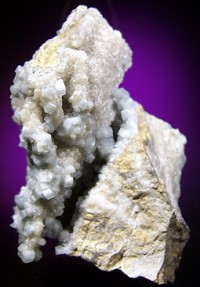
Enhances thyroid functions. Reduces stress. Relaxing, peace of mind. Accelerates growth. Aids personal creative expression. Helps one adjust to higher, more rarefied states of awareness. Truth, reliability. Clear speech.
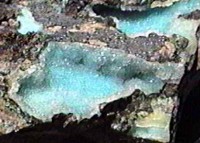
Aids in preventing ulcers, digestive problems, arthritic conditions. Strengthens lungs and thyroid gland. Enhances metabolism. Excellent for female disorders. Alleviates fears, guilt, tension. Helps clear subconscious imbalances. Activates feminine qualities. Amplifies throat chakra-creative expression, power, communication. Joy, emotional balance.
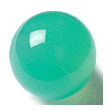
Lifts the emotions - a cheering stone. Banishes greed, envy, selfishness, tension, and stress. Worn for eloquence, success in new undertakings, and to attract friends. Draws out unknown talents. Carry a small piece with you at all times to attract money. Works with emotional, personal insight. Enhances fertility for both sexes and can help guard against sexually transmitted diseases. Helps gout, mental illness, and eye problems.
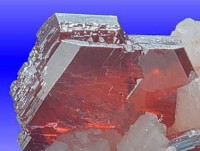
Scientific Information: Cinnabar is Mercury sulfide. The chemistry is HgS. It is bright red, purplish red to brownish red. The streak is scarlet to brownish red. The hardness is between 2 and 2-1/2.
Environment: Cinnabar is formed at low temperature, usually near hot springs or where there has been volcanic activity. It also forms in epithermal veins, associated with opal, chalcedony and dolomite.
Occurrence: Almaden, Ciudad Real, Spain, is a famous locality for cinnabar. In North America important cinnabar deposits occur in California, Nevada, Oregon, and Texas. In California fine crystals of cinnabar have come from the Almaden Mine in Santa Clara Co. and the New Idria Mine in San Benito Co. Beautiful crystals occur in calcite at the Cahill Mine, Humboldt Co., Nevada.
Name: The name is said to have come from India.
Warning: Cinnabar is extremely POISONOUS! Do not use it for healing or magical purposes.
Magical Properties: NOT WORTH IT. POISONOUS!
Healing: DO NOT USE! POISONOUS!
Notes: Cinnabar is the principal ore of mercury. Native mercury, a liquid, is rare and usually occurs with cinnabar as heavy, tin-white metallic drops.
Bibliography

Opens conscious mind to intuition. For psychic and physical digestion and assimilation. Helps one adjust and adapt to process changes. Helps one feel confident and secure. Strengthens the will. Stimulates communication. Promotes mental clarity. Teaches unlimited prosperity - use, enjoy, and release so more and better things may come to you.
Compiled by Fern Bouchard
A variety of quartz. Good for kidneys, colon, liver, gallbladder, digestive organs, heart. Tissue regeneration. Detoxifies physical/emotional/mental bodies. Enhances body's healing energy. Diminishes self-destructive tendencies. Raises self-esteem. Powerful alignment with Higher Self. Lightheartedness, cheerfulness, hope. Warming, energizing. Attracts abundance.
By Legion of Light
Scientific Information: CaCo3, or calcium carbonate in the form of calcite, is the main constituent of calcareous corals; minor constituents are MgCo3, or magnesium carbonate and proteinaceous organic substances, which act as binding agents. At 2.5 to 4, the hardness is slightly higher than that of calcite. The skeletons of corals vary in color: from bright to dark red, slightly orange-red, pink and white.
Environment: In all cases, coral consists of the branching skeletons of animals which live in colonies planted on the seabed at depths varying from tens to hundreds of meters. They are typical of warmish to very warm seas.
Occurrence: The most famous of these organisms is Corallium rubrum, which lives in the waters of the Mediterranean and, despite its name, provides not only red, but orange, pink, and white coral. Similar to this are Corallium elatius, C. japonicum, and C. secundum, which mainly live off the coasts of Japan, China, Indochina, the Philippines, and other archipelagos of the Indian and Pacific Oceans. Coral colonies occupy large areas especially in the Pacific, but also near the coast of South Africa, in the Red Sea, and to the east of Australia. These latter colonies, however, consist of madrepore, which has little in common with the corals used as ornaments.
Gemstone Information: Most of the coral used since antiquity as an ornamental material comes from the calcareous skeletons of colonies of marine organisms of the phylum Cnidaria, order Corgonacea, genus Corallium. Corals take a good polish. They also have a certain degree of elasticity and can be heated and bent into bangles. Thin branches were and still are polished, pierced, and threaded, unaltered, into necklaces. Larger pieces are cut into spherical or faceted necklace beads, pear shapes for pendant jewelry, or cabochons. It is also used for carved pieces and small figurines, in both oriental and western art styles. The most highly prized varieties of coral are those that are a uniform, strong bright red.
Name: The name is derived from the Latin [corallium,] related to the Greek [korallion].
Legend and Lore: The oldest known findings of red coral date from the Mesopotamian civilization, i.e. from about 3000 BC. For centuries, this was the coral par excellence, and at the time of Pliny the Elder it was apparently much appreciated in India, even more than in Europe. Red coral has traditionally been used as a protection from the "evil eye" and as a cure for sterility. One of the Greek names for Coral was Gorgeia, from the tradition that blood dripped from the Head of Medea, which Perseus had deposited on some branches near the sea-shore; which blood, becoming hard, was taken by the Sea Nymphs, and planted in the sea.
Magical Properties: Coral is associated with Venus, Isis and Water. It has been used as a form of protective magic for children for hundreds of years. Cunningham recommends it as a luck-attractor for living areas. Sailors use it as a protection from bad weather while at sea. Red-orange coral is one of the four element gemstones of the Pueblo Indians. It is one of the four colors used for the directions in the Hopi/Zuni Road of Life. Coral is considered a representative of the warm energy of the Sun, and the southern direction.
Healing: Coral's healing properties are mostly associated with Women, young children and the elderly. For women it is said to increase fertility and regulate menstruation. For young children, it is recommended to ease teething and to prevent epilepsy. For the elderly, it is used as a cure for arthritis.
Personal Experience: I use coral at the lower Chakras for "Women's Healing." In particular, I will use it for disorders relating to female reproductive organs. I also use it magically, to represent female fertility. I have used it with some success for arthritis, but only for women. This is one of the stones that I "reserve" for female/feminine use. (I use Carnelian as the "male" counterpart.) I have not had an opportunity to try it for a young child.
Bibliography
Brings fierceness, strength and fortitude. Strengthens friendships and protects from evil, disease and plagues. If set in gold it drives away night monsters... When stolen attracts negative vibrations. Diamonds require cleaning often.
Six sided luckiest square brings balance and harmony triangular disharmony and friction.
Compiled by Lady Hathor - The Silver Circle - Toronto, Ont.
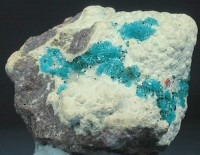
Strengthens cardiovascular and central nervous systems. Excellent aid for ulcers, nervous stomach, heart troubles, blood pressure. Vitalizes, balances, tones body/mind. Emotional stability. Peach of mind. Excellent for use with healing and affirmations. Abundance, prosperity, progress, health, well-being.

Scientific Information: Emerald is a type of Beryl, Beryllium aluminum silicate, frequently with some sodium, lithium and cesium. It's chemistry is Be3Al2Si6O18. Beryls range in color from Bright green (emerald), blue, greenish blue (aquamarine), yellow (golden beryl), red, pink (morganite) to white. The streak is colorless. It's hardness is 7-1/2 to 8. The crystals are Hexagonal and they are common. Fine emeralds have velvety body appearance; their value lies in their even distribution of color. Inclusions are common in emerald, but other stones of this group are usually most valuable when free of flaws.
Environment: Beryl develops in pegmatites and certain metamorphic rocks. It occurs with quartz, microcline, and muscovite in pegmatites, and with quartz, muscovite, and almandine in schist of regional metamorphic rocks.
Occurrence: Best emerald comes from Colombia. (NOTE: it is not necessary to spend thousands of dollars for a tiny chip of emerald to add to your healing/ magical collection. If you look around in rock shops, you may be able to come across some "less than perfect" stones that aren't faceted.
Name: The name is from the Greek [beryllos] indicating any green gemstone.
Legend and Lore: Emerald is considered a birthstone for the month of May.
"Who first beholds the light of day,
In spring's sweet flowery month of May,
And wears an Emerald all her life,
Shall be a loved, and happy wife."
Magical Properties: "If you wish to bring a love into your life, buy an emerald and charge it with your magical need through your visualization, perhaps while placing it near a green candle. After this ritual, wear or carry the emerald somewhere near your heart. Do this in such a way that it cannot be seen by others. When you meet a future love, you'll know it wasn't the visible jewel that attracted him or her." (3) The Greeks associated this stone with the Goddess Venus. It has come to represent, for many people, the security of love. Emerald, like almost all of the green stones, is also advantageous for business/money ventures.
Healing: Emerald is said to aid perception and inner clarity. Because of this, they are also associated with healing diseases of the eye, and problems affecting eyesight. It was believed that emeralds could counteract poisons and cure disentary.
Personal Experience: I sometimes use Emeralds in a stone layout. I will use them for their psychological/spiritual values of clarity and perception. If I am using them for this purpose, I use them in the area of the Heart Chakra, in conjunction with Rose Quartz, or Rhodochrosite for balanced energy. I've also used them for prosperity consciousness.
Bibliography